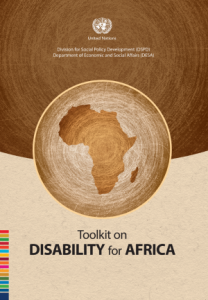- Main page: Handbook for Parliamentarians
- Focal points
- Coordination mechanisms
- National human rights institutions
- Parliamentary oversight
- The courts and the role of the judiciary
- References
THE COURTS AND THE ROLE OF THE JUDICIARY
Depending on the constitutional structure of each State party, ratification of the Convention on the Rights of Persons with Disabilities will either automatically result in the content of the Convention becoming part of domestic law and applicable by domestic courts (known as the “monist” approach to the reception of international law, common to civil-law traditions), or will require the incorporation of the rights enumerated in the Convention through domestic legislation (known as a “dualist” approach, typical in common-law traditions). Even in the latter case, however, signing or ratification of the Convention alone creates a strong interpretative preference in favour of the Convention. This means that the judiciary will apply domestic law and interpret legislation in a manner that is as consistent as possible with the Convention, applying a commonly held constitutional assumption that the domestic law of a State does not intend to be inconsistent with the State’s international obligations. In addition, as evident through case law developed before the adoption of the Convention, States recognize their obligation to apply the principles of equality and non-discrimination in protecting and promoting the rights of persons with disabilities.
Most of the case law considered in the box below is that of higher, appeals courts, although some decisions by national human rights complaints or conciliation bodies are also included. To date, the judiciary has played an important role in developing the principle of non-discrimination as applicable to persons with disabilities. There are both advantages and disadvantages to the judiciary playing such a central role in the protection of rights.
Judicial protection of rights
Most national legal systems use a formal and hierarchical judicial process to determine rights and duties and to establish legal principles. Through the combination of tribunals and civil codes, or the application of the doctrine of precedent, this helps to ensure that the development of law and legal principles is consistent over time. It also has the advantage of bringing “test cases” before higher courts, which are composed of senior judicial officers who are capable of giving careful consideration to issues that may be complex or that might have significant policy implications. Cases at this level also normally attract high-quality legal submissions and representation of parties. A decision on a “test case” can have repercussions not only for the parties to the dispute, but also for other people who might be in the same or a similar situation. For example, the decision of the court in the “test case” might lead not only to compensation for the person bringing the dispute, but also to systematic policy changes and, therefore, to an improvement in the realization of rights for a large group of individuals. The role of the judiciary in the protection of rights is therefore extremely important.
Judges are frequently considering cases concerning any of the full range of civil, cultural, economic, political and social rights. Various intergovernmental and non-governmental institutions have called for the development of case databases on the justiciability of rights. Such mechanisms can be useful for training and increasing awareness among judges and lawyers. As shown in the box below, even prior to the adoption of the Convention, either as a result of specialized national legislation or through the application of the principles of equality and non-discrimination, national case law concerning the rights of persons with disabilities and the enforcement of these rights has already been developed, as have corresponding jurisprudence and commentary by international and regional human rights bodies.
At the same time, there are some limitations inherent in the judicial protection of rights. Litigation, particularly at the appellate level, is expensive and lengthy. The cost of court proceedings may render such recourse inaccessible or unattractive. This may be particularly relevant to persons with disabilities who rely upon social welfare and who, depending on the nature of the issue involved, may not qualify for State-sponsored legal assistance. The time involved in legal proceedings may also either discourage the pursuit of valid claims or exacerbate the situation while proceedings are pending. For persons with disabilities, this may result in continued exclusion from participation in mainstream society. The nature of formal, judicial processes may also be inappropriate for resolving disputes concerning the rights enumerated in the Convention. Again, depending on the nature of the dispute or issue involved, mediation or conciliation may be a more effective means of ensuring compliance with the Convention. The various alternative grievance mechanisms considered earlier in this chapter might, at times, provide faster, cheaper, and more accessible and appropriate means of resolving disputes.
SOME CASE LAW ON THE RIGHTS OF PERSONS WITH DISABILITIES
Persons with disabilities have brought cases before the courts in many countries and also before regional human rights courts, such as the European Court of Human Rights. In deciding on these cases, the courts have clarified what States must do to protect the rights of persons with disabilities and have provided remedies to people who have suffered violations of their rights. For example, courts have held that:
- Air carriers should provide a wheelchair for use between the check-in counter at an airport and boarding the aircraft as part of their service to customers. Requiring payment to use such equipment would be unlawfully discriminatory (Ryanair v. Ross [2004] EWCA Civ 1751).
- In medical settings, a lack of reasonable accommodation, in the form of sign-language interpretation for a person who was born deaf and needs to use sign language to communicate, is incompatible with anti-discrimination legislation (Eldridge v. British Columbia [Attorney General] [1997] 3 SCR 624).
- A university had discriminated against a graduate student by refusing her access to a building after hours on the basis that she was suffering from depression, while other graduate students were granted access. The court held that access was part of services customarily available to the public and that the denial of access based on the student’s mental health amounted to discrimination (University of British Columbia v. Berg [1993] 2 SCR 353).
- The PGA Golf Tournament, conducted on public grounds and open to qualifying participants from the public, should modify its rules to accommodate a qualified entrant who could not walk great distances and provide golf-cart transport, rather than requiring that the person walk the course as other contestants did (PGA Tour v. Martin [2001] 204 F 3d 994).
- The failure by prison authorities to provide special facilities or treatment in the light of a prisoner’s health problems was found to cause suffering beyond that which was inevitable during a prison sentence (Mouissel v. France [2002] EHRR).
- The delay of 40 months in providing a disability benefit was held by the Constitutional Court of South Africa to amount to not just a breach of social-welfare law but, because of the impact on the capacity of the person to sustain herself, also a breach of her dignity (Department of Welfare v. Nontembiso [March 2006] Case No. 580/04, at 32).
- Isolation and segregation of individuals with disabilities are a serious and pervasive form of discrimination. This is particularly relevant to the exclusion of children with disabilities from mainstream schools (Olmstead v. L C [1999] 527 US 581).
- The enjoyment of a proper standard of living means that persons with disabilities may not only require access to facilities and services, but might also need to be exempted from rules that might otherwise prejudice their ability to enjoy life. In this case, the refusal by an apartment complex to grant permission for a tenant to keep a guide dog was deemed unlawful discrimination on the grounds of disability (Holt v. Cokato Apartments Ltd [1987] 9 CHRR D/4681).
Finally, a case before the European Court of Human Rights illustrates that a failure to accommodate can amount to a violation of other human rights. The case involved the detention in prison of a person confined to a wheelchair. She had extensive need for assistance, such that, at night, she was unable to move enough to maintain a normal body temperature if the room in which she stayed was not specially heated or she was not wrapped in a space blanket. The Court recognized that the applicant was different from other people, and that treating her like others was discriminatory and violated the prohibition against degrading treatment and the right to bodily integrity (Price v. United Kingdom [2002] 34 EHRR 1285).
The most important thing is to recognize that where we are today is already a testimony to the empowerment of a community that has a long history of disempowerment. It’s the drive and commitment of the disabilities community itself that was the greatest impetus towards the content of the treaty and the fact that it has now such broad-based recognition.
Louise Arbour, United Nations High Commissioner for Human Rights
_______________________________________________________________________________________________
CHECKLIST FOR PARLIAMENTARIANS
How I can help promote and protect the rights of persons with disabilities through national institutions
- Ensure that a framework is established, preferably in the form of a national human rights institution that has the authority to promote, protect and monitor the implementation of the Convention.
- Ensure that the national institution chosen or created to oversee the implementation of the Convention conforms to the Paris Principles.
- Ensure that the national institution chosen or created to promote, protect and monitor the implementation of the Convention is provided with adequate financial and human resources so that it can do its work effectively and efficiently.
- Consider drafting a national human rights action plan that outlines the strategy or actions to be taken to implement the State’s obligations under all human rights instruments to which it is a party.
Footnotes:
3. For more details, see chapter 4.
4. See, for example, the recommendations in Effective functioning of human rights mechanisms: national institutions and regional arrangements — Regional Arrangements for the promotion and protection of human rights in the Asian and Pacific region (E/CN.4/2006/100/Add.1, paras. 34 ff.).




